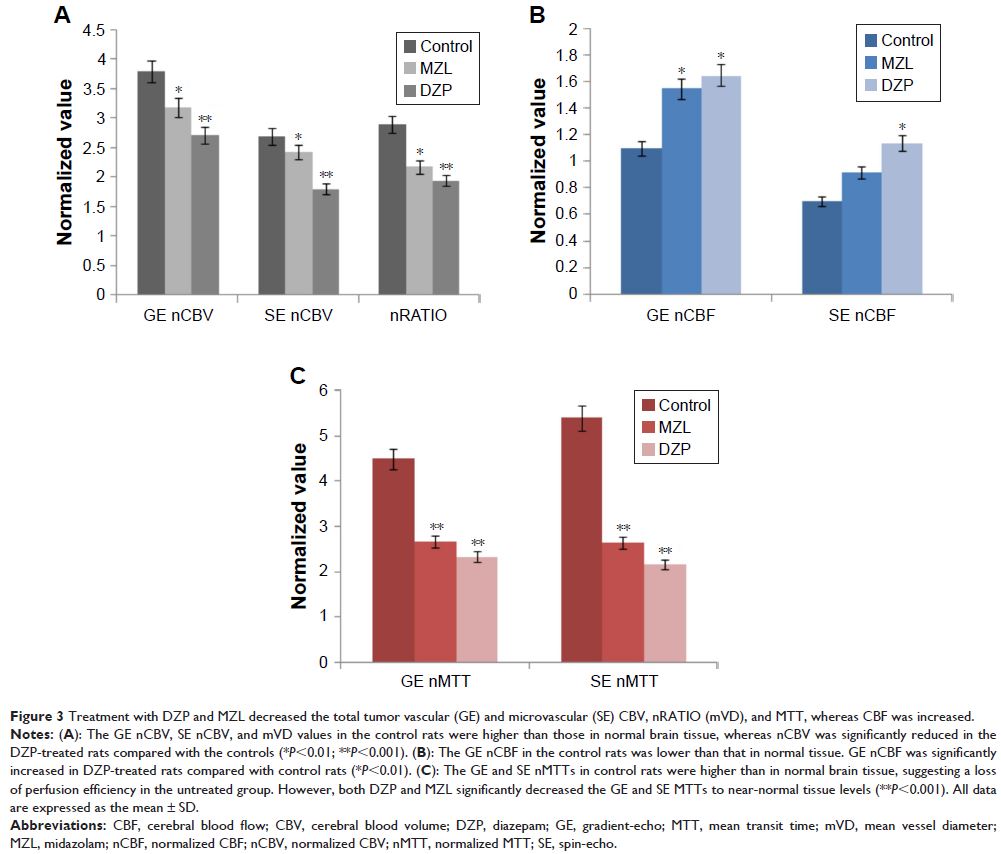108384
论文已发表
注册即可获取德孚的最新动态
IF 收录期刊
- 3.4 Breast Cancer (Dove Med Press)
- 3.2 Clin Epidemiol
- 2.6 Cancer Manag Res
- 2.9 Infect Drug Resist
- 3.7 Clin Interv Aging
- 5.1 Drug Des Dev Ther
- 3.1 Int J Chronic Obstr
- 6.6 Int J Nanomed
- 2.6 Int J Women's Health
- 2.9 Neuropsych Dis Treat
- 2.8 OncoTargets Ther
- 2.0 Patient Prefer Adher
- 2.2 Ther Clin Risk Manag
- 2.5 J Pain Res
- 3.0 Diabet Metab Synd Ob
- 3.2 Psychol Res Behav Ma
- 3.4 Nat Sci Sleep
- 1.8 Pharmgenomics Pers Med
- 2.0 Risk Manag Healthc Policy
- 4.1 J Inflamm Res
- 2.0 Int J Gen Med
- 3.4 J Hepatocell Carcinoma
- 3.0 J Asthma Allergy
- 2.2 Clin Cosmet Investig Dermatol
- 2.4 J Multidiscip Healthc

使用动态敏感性对比 MRI 研究在 9L 神经胶质瘤脑肿瘤模型中地西泮 (diazepam) 和咪达唑仑 (midazolam) 对肿瘤脉管系统的功能性和形态学影响:一项比较研究
Authors Yan N, Zheng Y, Yang C
Received 13 June 2017
Accepted for publication 15 August 2017
Published 4 October 2017 Volume 2017:11 Pages 2931—2936
DOI https://doi.org/10.2147/DDDT.S143838
Checked for plagiarism Yes
Review by Single-blind
Peer reviewers approved by Dr Cristian Vilos
Peer reviewer comments 2
Editor who approved publication: Dr Sukesh Voruganti
Abstract: Antiangiogenic
therapy attenuates tumor growth by reducing vascularization. Diazepam (DZP) and
midazolam (MZL) have antiangiogenic properties in human umbilical vein
endothelial cells. Thus, we investigated the antiangiogenic activity of DZP and
MZL in the rat 9L gliosarcoma brain tumor model. The effect on tumor
vasculature was evaluated using dynamic susceptibility contrast magnetic
resonance imaging with gradient-echo (GE) and spin-echo (SE) to assess
perfusion parameters, including cerebral blood volume (CBV), cerebral blood
flow (CBF), mean transit time (MTT), and mean vessel diameter. The
GE-normalized CBF (nCBF) in the tumors of untreated controls was significantly
lower than that in normal brain tissue, whereas the CBV and MTT were higher. DZP-
and MZL-treated rats had higher CBF and lower CBV and MTT values than did
untreated controls. The tumor size decreased significantly to 33.5% in
DZP-treated rats (P <0.001) and 22.5% in
MZL-treated rats (P <0.01) relative to controls.
The SE-normalized CBV was lower in DZP-treated (32.9%) and MZL-treated (10.6%)
rats compared with controls. The mean vessel diameter decreased significantly
by 32.5% in DPZ-treated and by 24.9% in MZL-treated rats compared with controls
(P <0.01). The GE and SE nCBF
values were higher in DZP-treated (49.9% and 40.1%, respectively) and
MZL-treated (41.2% and 32.1%, respectively) rats than in controls. The GE- and
SE-normalized MTTs were lower in DZP-treated (48.2% and 59.8%, respectively)
and MZL-treated (40.5% and 51.2%, respectively) rats than in controls. Both DZP
and MZL had antiangiogenic effects on tumor perfusion and vasculature; however,
the antiangiogenic activity of DZP is more promising than that of MZL.
Keywords: diazepam, midazolam, 9L gliosarcoma, antiangiogenic, DSC-MRI
